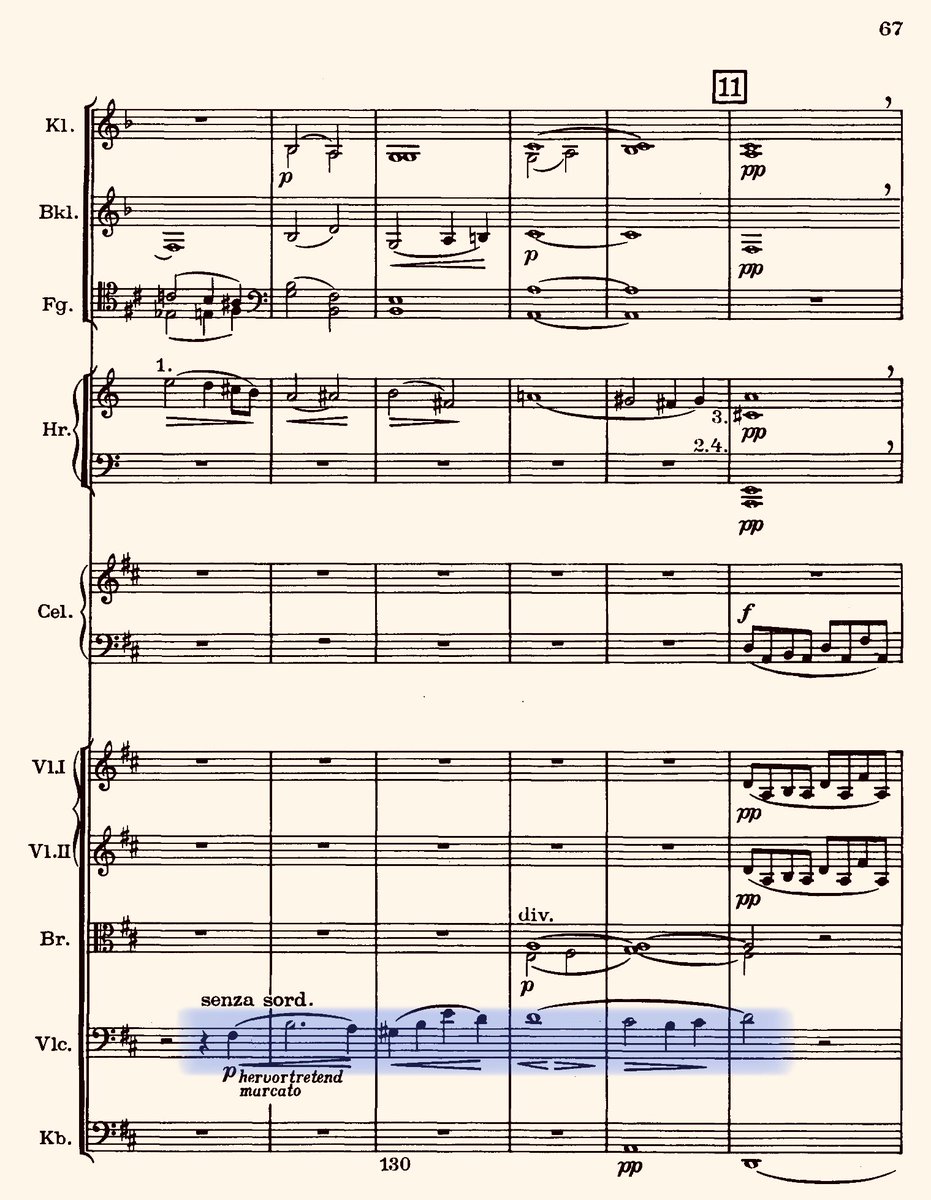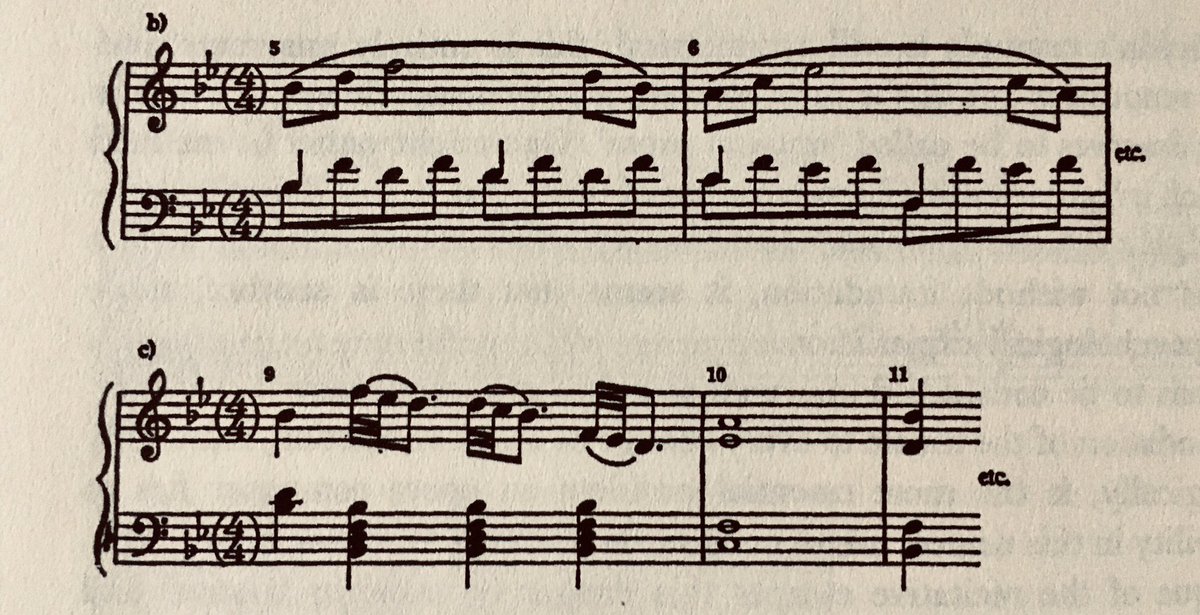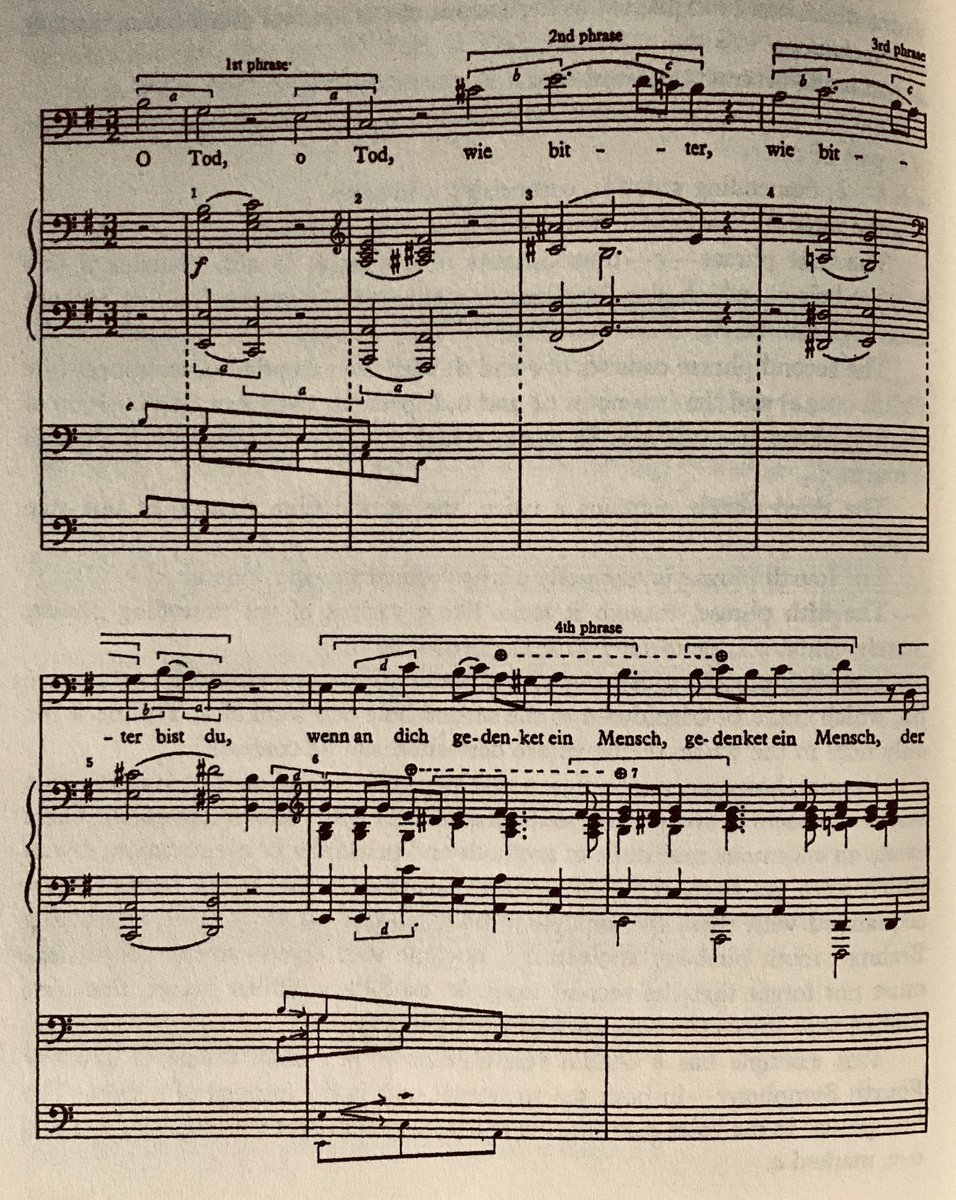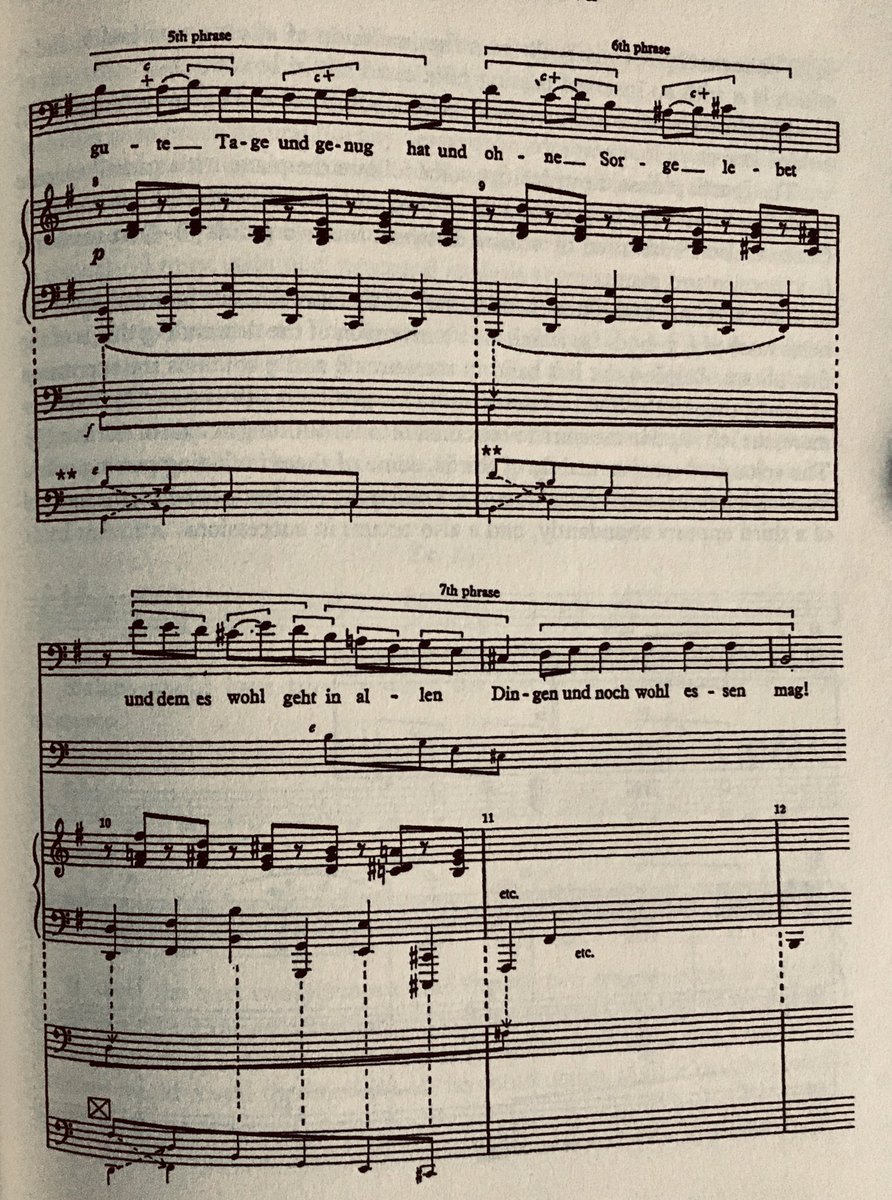𝐖𝐨𝐫𝐝𝐬 𝐢𝐧 𝐦𝐮𝐬𝐢𝐜
Throughout musical history, there have been countless forms which composers have employed in order to express their musical ideas, like symphonies, concerti and operas for orchestral forces and quartets, trios and sonatas for smaller ensembles.
1/34
Throughout musical history, there have been countless forms which composers have employed in order to express their musical ideas, like symphonies, concerti and operas for orchestral forces and quartets, trios and sonatas for smaller ensembles.
1/34
These are only a few of a vast array of musical forms, and I have only mentioned a few predominant mainly in the Classical and Romantic eras; there are a host of others!
To illuminate their merits would take countless hours and countless Tweets.
2/34
To illuminate their merits would take countless hours and countless Tweets.
2/34
Today I would therefore like to direct your attention to a musical form which has been almost a constant throughout the entirety of history.
When humanity first made music, they did so using the instrument born within virtually every human body; the voice.
3/34
When humanity first made music, they did so using the instrument born within virtually every human body; the voice.
3/34
Thus it is the SONG with which I shall concern myself today; with vocal music.
4/34
4/34
As this too is a broad area of study and reflection, I will not painstakingly analyse the various song forms, arias and such but would like to shed some light on the following question: how does music accommodate textual and poetic requirements in such forms?
5/34
5/34
A composer will often select for his song, a poem with a particular metre which allows him to match the musical metre with the poetic one.
6/34
6/34
Technically, one could also, of course, select prose to fit to music, or even a recipe—but this is rarely done
7/34 https://m.youtube.com/watch?v=8QWCh5Ko8CE">https://m.youtube.com/watch...
7/34 https://m.youtube.com/watch?v=8QWCh5Ko8CE">https://m.youtube.com/watch...
Moreover, the fact that the composer will almost invariably select a poem to set to music is highly significant as it illuminates the extent to which poetry and music possess similar qualities, enabling so natural a marriage.
8/34
8/34
Let me offer this famous example of Schubert in which the poetic metre is quite seamlessly matched with the musical rhythm:
9/34
9/34
I believe that anyone who hears this music will, because of mankind‘s inherent musical faculty, immediately grasp the way in which both the music and the poem use stressed and unstressed notes and syllables.
10/34
10/34
It is perhaps interesting to note that I believe this tension and release—inherent in metre both poetic and musical—to be a reflection of nature; of breathing in and out, of the tension and relaxation of our muscles, of the rhythm of our tread and, of course, our speech.
11/34
11/34
Another fascinating feature of vocal music is, that due to its involvement of an extramusical element—namely text—that the listener cannot escape associating the words of this text with certain images or feelings.
12/34
12/34
Thus, when the poem is a light, dainty thing; slow, dark music would be but ill-befitting (though such combinations are occasionally made on purpose with the intent of irony).
13/34
13/34
Painting words with musical colours can be done in several ways, the first is simply to match the mood of the music with the mood perceived in the text.
In such vocal music, the notes are not clearly expressing something extramusical.
14/34
In such vocal music, the notes are not clearly expressing something extramusical.
14/34
An aria like this one from Mozart clearly expresses a sense of peace; with a noticeably dramatic accent on the word “morte”—death. Note that this is not a visual extramusical reference, merely a colouring of the word...
15/34 https://m.youtube.com/watch?v=5Xitp8O3rdM">https://m.youtube.com/watch...
15/34 https://m.youtube.com/watch?v=5Xitp8O3rdM">https://m.youtube.com/watch...
...while this song by Schumann conveys a dark and troubled mood; interestingly this is mainly achieved because the piano barely plays at all throughout the piece.
16/34
16/34
A second device can be found in the imitation of that which the words describe; such as in this little song by Beethoven, where the rapid, jumpy figures on the piano illustrate quite aptly the quirky movements of the flea described in the song.
17/34 https://m.youtube.com/watch?v=9_oJWm0M2OE">https://m.youtube.com/watch...
17/34 https://m.youtube.com/watch?v=9_oJWm0M2OE">https://m.youtube.com/watch...
A more subtle example of this is Schubert‘s song “sei mir gegrüßt” in which the accompaniment is guitar-like, thus invoking the notion that this song might be a kind of serenade or a minstrel‘s song.
18/34 https://m.youtube.com/watch?v=4FEteqQox4Q">https://m.youtube.com/watch...
18/34 https://m.youtube.com/watch?v=4FEteqQox4Q">https://m.youtube.com/watch...
A third possibility allows for symbolism of certain notes; take, for example, this song by Mahler where a symbolic quotation is used from his Third Symphony (At 5:55). Not on a word, but the principle is made clear exceedingly well nonetheless.
19/34 https://m.youtube.com/watch?v=OysoOQSSk6w">https://m.youtube.com/watch...
19/34 https://m.youtube.com/watch?v=OysoOQSSk6w">https://m.youtube.com/watch...
The theme alluded to is the first subject from the last movement of this Third Symphony; also in D major. This movement was originally subtitled “Was mir die Liebe erzählt”.
20/34 https://m.youtube.com/watch?v=sJw0slhUWek">https://m.youtube.com/watch...
20/34 https://m.youtube.com/watch?v=sJw0slhUWek">https://m.youtube.com/watch...
In the light of the grief expressed both musically and textually in the “Kindertotenlieder”, the presence of this motif here may cause us to summarise that “death is strong, but love ultimately has the last word”—an association that can be considered fully intentional.
21/34
21/34
A last feature of (some) vocal music I would like to explain is unfortunately not very easy to explain, but I will do my best and will not withhold it from you on the—false—pretext of it being “too technical”.
22/34
22/34
Concisely put, it is about adapting the symmetry of phrases to suit the poetic metre; a useful technique when setting to music poems or text, the lines of which are not easily fitted into a musical metre—perhaps because they feature irregular feet or have no metre.
23/34
23/34
This requires that the music adapts itself, in this case by resorting to phrases of unequal size and of an asymmetrical cast.
24/34
24/34
In Mozart‘s “Le Nozze di Figaro” we see, near the close of the second act, an assortment of motives is juggled and seamlessly joined through Mozart& #39;s genius.
25/34
25/34
Over these, he writes the vocal lines and the ease with which these are able to alternate allow Mozart to fulfil the dramatic necessities of the play.
26/34 https://m.youtube.com/watch?v=Mo129QTp4ls&t=1h17m40s">https://m.youtube.com/watch...
26/34 https://m.youtube.com/watch?v=Mo129QTp4ls&t=1h17m40s">https://m.youtube.com/watch...
To those among you able to read the music, do try to see if you can hear how these motives are alternated yet form a coherent whole.
27/34
27/34
In Brahms, we have a great model of this kind of writing; famously analysed in Schoenberg‘s essay “Brahms the progressive”. Consider this example, consisting of seven phrases of various proportions:
28/34
28/34
Here is the example in the full glory of performance:
29/34 https://m.youtube.com/watch?v=PNKXJqndQ_U">https://m.youtube.com/watch...
29/34 https://m.youtube.com/watch?v=PNKXJqndQ_U">https://m.youtube.com/watch...
This way of writing phrases was also introduced in purely instrumental music, and especially in the music of composers after Brahms, the standard eight- or sixteen-bar phrases became nigh obsolete in favour of more fluid phrases.
30/34
30/34
Thus, in the trio of the scherzo from his Sixth Symphony, Mahler‘s phrases feature very rapid changes of metre.
31/34
31/34
Listen how Mahler tips the sense of metre only a little off balance through these little additions of 8/4 bars in a piece mostly in 3/8; generating an “additional” beat.
https://m.youtube.com/watch?v=bi8hZzUAw20&t=2m0s
32/34">https://m.youtube.com/watch...
https://m.youtube.com/watch?v=bi8hZzUAw20&t=2m0s
32/34">https://m.youtube.com/watch...
In Mahler‘s “der Abschied” from “Das Lied von der Erde”, the music abundantly flows across the bar lines; both in the instrumental passages and the vocal parts.
33/34 https://m.youtube.com/watch?v=Q_bwuSK7U34">https://m.youtube.com/watch...
33/34 https://m.youtube.com/watch?v=Q_bwuSK7U34">https://m.youtube.com/watch...
These particular examples I have picked because of my previous #TheoryThursday threads on pictures and extramusical associations and the fact that it is this illustrative power in vocal music I have here attempted to explain.
Have a beautiful evening everyone!
34/34
Have a beautiful evening everyone!
34/34

 Read on Twitter
Read on Twitter








